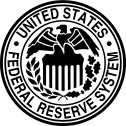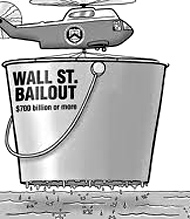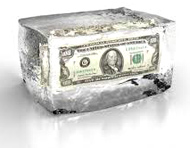
A reader commented on one of my other articles that “all of the Big Four [Australian Banks] took bailout money from the Federal Reserve“. I had always heard that the Australian banks were some of the most financially stable in the world and, therefore, this reader’s claim sounded wrong to me, so I had to investigate.
At first I thought the claim must be completely wrong but with my first Google search I discovered that it was only partially wrong.
This Sydney Morning Herald article from December 2010 states that both Westpac and NAB “borrowed billions of dollars in emergency funds from the US Federal Reserve”. So it wasn’t all four banks as claimed, it was only two. (If you have proof that the other two also did then please provide it in the comments below.)
What is the difference between a “bailout” and a “loan”?

But what about the claim that it was “bailout money”? What does that imply/mean? What’s the difference between a “bailout” and a “loan”?
Notice that the article mentions that several central banks also “tapped” the Fed’s emergency lending window for short term loans, including Australia and Switzerland! Did Australia and Switzerland need “bailouts” or just short term loans? Surely Switzerland wasn’t bankrupt was it?
My definition of “bailout” is when you have made so many bad loans and your losses are going to be so great that nobody in their right mind will lend you any money.
What happened during the crisis was that because nobody knew for certain how big the other companies’ losses where going to be, all the lenders decided to play it safe for a while and just not lend anybody any money at all. Not even companies that were actually in really sound financial shape could borrow money.
Additionally some of the companies that would normally lend money didn’t know how many of their borrowers would default on their loans and therefore these lenders didn’t know how much they had left over to make new loans – so they didn’t make any new loans until they had it all figured out.

This is what they meant by the “freezing up” of credit markets. Everybody froze and stopped lending until they could figure out what the damage was.
To understand the next part of the explanation you have to know that it is common practice for companies to borrow money in order to expand – even though they have to pay interest on the loans, they can make much more in profit from expansion than they pay in interest, so its a smart financial move. These loans are often short term loans (between 1 and 5 years), but they are usually “rolled-over” which means when the loan term is completed they simply take out another loan for a similar amount.
Therefore, financially sound companies that were unlucky enough to have borrowed money which had to be rolled over during, or just after, the financial crisis, were in deep trouble because nobody was lending any money to anybody, regardless of how financially sound they were. On the other hand, financially sound companies which didn’t have to roll over their loans until a couple of years after the crisis weren’t impacted by the credit freeze.

That’s why the US Federal Reserve made available the emergency lending window. They couldn’t tell which companies were financially sound and which weren’t so they just let anybody borrow, because they didn’t want good companies going down just because nobody was lending anybody any money.
The Federal Reserve made short term loans available to companies and central banks. When everyone else stopped lending the Federal Reserve stepped in and started lending in order to keep the world’s economy from completely freezing.
Was it a “loan” or a “bailout”?
How you can tell whether the short term loans that the NAB and Westpac borrowed from the US Federal Reserve were “bailouts” or just “short term loans”, is by looking at those companies’ profit for those years. If they were in sound financial position then they were loans, but if they were close to bankruptcy then they were bailouts.

Westpac
In 2008 Westpac made a profit of $3.7 billion (Brisbane Times report Westpac Annual Report 2008
In 2009 Westpac made a profit of $3.45 billion (ABC report Westpac Annual Report 2009
They were hardly bankrupt and in need of a bailout were they? They only borrowed $1 billion from the Federal Reserve.

NAB
In 2008 NAB made a profit of $4.5 billion (ABC report NAB Annual Report 2008
In 2009 NAB made a profit of $2.9 billion (The Australian report NAB Annual Report 2009
They were hardly bankrupt and in need of a bailout were they? They only borrowed $4.5 billion from the Fed.
Conclusion
The conclusion I draw from this is that NAB and Westpac did not receive a “bailout” from the US Federal Reserve, but rather short term loans.
What do you think? Am I making sense?
 Logical ideas and commentary about society, politics
Logical ideas and commentary about society, politics 
Tomato, Tomato? I hope to God you’re right, but I’ll still be taking all media (mainstream, alternative, and Am I Making Sense) with a grain of salt and letting history decide. In the meantime, let’s help each other instead of competing.